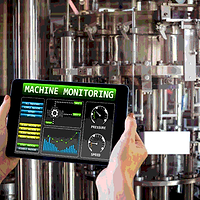Leveraging Ethnography to Improve Food Safety

Ethnography, a qualitative research method consisting of observation and interviews within a naturally occurring environment, has become increasingly prevalent in applications outside of anthropology (within which it was originally derived). More recently, ethnography has been applied to fields including healthcare, education and consumer packaged goods, to name a few, wherein the method is leveraged to understand behaviors, interactions and routines of particular user/consumer typologies to develop new products, services and systems that better deliver on organizational goals. How then might this method be leveraged to improve food safety practices?
The Value of the Method
Applied ethnography, when properly employed, gives us an unbiased and comprehensive understanding of current practices—often the foundation for determining (and/or encouraging) best practices. With a detailed depiction of the current state, both the behaviors and the “whys” behind them, we can start to identify ways to optimize food safety practices and processes overall. This type of optimization is likely to drive improved efficiency, quality, ease of use, consistency and safety. Here’s how:
Efficiency – By targeting those tasks or interactions identified as inefficient, redundant and/or time consuming, we can reduce the number of steps and/or the time (and labor) associated with completing them.
Quality – Process variations and missteps can often lead to suboptimal results; identifying and eliminating existing activities that can negatively influence outcomes can significantly impact customer satisfaction.
Ease of Use – Physical challenges and cognitive disconnects can act as barriers to proper task execution. Identifying these issues is a first step toward enhancing user/employee satisfaction and engagement, and reducing the learning curve.
Consistency – Process deviations are often born out of individual workarounds and subjective metrics. Identifying those activities and outputs with the greatest deviation, and more importantly, addressing the cause(s), can help ensure reproducible results.
Safety – Lack of adherence and/or awareness of protocols can compromise workplace and product safety. Develop-ing an internal understanding of existing safety violations and threats can help promote a safer work environment.
How to Employ Ethnography
The key to ethnography is to absorb and understand everyday behaviors and activities. In-context observations are supported by in-depth and intercept interviews with both end-users (employ-ees, operators, technicians, etc.) and relevant stakeholders (managers, distri-butors, customers, etc.) to identify and understand the challenges, work-arounds, deviations and drivers as outlined above.
So we know what we’re looking to learn, but how do we know that what we see and hear is “real?” This is a key challenge to the method, as observers and interviewers must, to the greatest extent possible, mitigate the potential for data skewing and bias. While observations certainly can influence (and distract) the observed, there also is a tendency for people to tell others what they want to hear (particularly if they believe the listener might play a role in their career trajectory)! As such, it is recommended that the ethnographer employ the guidelines below to gain the truest depiction of current practices.
• Establish a rapport
Perhaps the most effective way to mitigate bias is to establish a rapport with the people you’re observing and interviewing. A first step to establishing a rapport is an introduction—be sure to introduce yourself and your purpose to everyone in the observational environment. While you’ll be acting as a “fly on the wall” for the bulk of observation, bypassing introductions can create uneasiness and confusion. During introductions, include a brief explanation of why you’re there and what you’ll be doing with what is learned. To whatever extent possible, put people at ease. Particularly within the context of food safety, workers are often accustomed to seemingly similar, stressful interactions such as audits and inspections, which this might be mistaken for—you’ll want to clearly distinguish this activity from others and emphasize the importance of natural behavior. For example, tell them, “This is not an audit. Rather, I’m trying to better understand the challenges you face daily so we can make your job easier.” It is important that conversations and interactions be friendly and casual. To that end, consider informal and unobtrusive language, dress codes and supplies (no large clipboards and stopwatches!). If because of one’s role or position within an organization you feel you and/or your teammates cannot effectively establish a natural, friendly rapport, consider using a third party to conduct applied ethnography. Generally, this tends to alleviate participant concerns and hesitations, leading to a more open and honest account of current practices.
• Suspend judgment
It is also important to suspend judgment while conducting ethnography. The goal is not to evaluate what is being observed in any way (that will come later). Rather, while in the field, the goal is simply to learn without pretense. To do so effectively, start with a clean slate—meaning no assumptions and no expectations. Taking this approach will help minimize the impact that your personal inclinations might have on the interpretation of activities, allowing for a truer understanding of routine behaviors. This is especially pertinent in a food-related environment, where personal preferences and standards around perceived cleanliness or ingredients may unwittingly color one’s perceptions. The clean-slate approach will also position the ethnographer as the student and the research subject as the teacher (they know what they do best), which tends to go a long way in establishing a rapport and creating a comfortable environment.
Evaluation of any kind during ethnography is likely to significantly impact behavior. To the extent possible this should be avoided, as apparent judgment—either positive or negative—immediately breaks the student/teacher relationship and puts people (understandably so) on guard. In instances where judgment inevitably takes place (e.g., personal or product safety is being compromised), do not overtly correct or worse, chastise. Rather, consider ways to subtly encourage alternative behavior, ideally after the observational component is completed (assuming no one is immediately at risk). For example, if observing misuse of a common tool or a grossly unhygienic act, one might later advise a stakeholder (i.e., supervisor) to circumvent the issue and/or suggest that the subject reference the instructions for use and/or consult a colleague.
• Understand the “whys”
While the first two guidelines speak primarily to the observational components of applied ethnography, understanding the “why” is largely accomplished via interviewing. This practice is critical in identifying the motivations and drivers behind behavior, which also helps ensure its accuracy. (Disconnects between cause and effect often illuminate potential discrepancies.)
Behaviors without motivations are only half the story. To effectively gain a comprehensive understanding of current practices, we must also aim to understand the “whys” behind any action. There are two primary methods to doing so. The first is to follow each observational component with an interview of those observed. At this time, one can follow up, in an open-ended way, on any and all activities observed. Again, it is important to not make any assumptions about what was observed—even if you think you know the rationale, ask why. There’s a good chance the response will further illuminate the context; there’s also a good chance that the initial response triggers another “why” to be asked.
If appropriate, you might also employ a think-aloud approach, during which participants are asked to quite literally think aloud while conducting an everyday activity. This approach, while not the truest sense of ethnography, can be an effective way to learn in real time of one’s expectations and motivations. However, this can also detract and distract from the task at hand. For this reason, as a rule of thumb, think-aloud approaches are most effective and least obtrusive when the activity being completed is very much routine and second nature, and talking through the procedure is unlikely (or less likely) to impact behavior. Similarly, think-aloud tactics are also effective when observing a repetitive activity, because they enable the observer to watch the activity multiple times—first in the truest sense and later employing the think-aloud technique.
Ethnography Outcomes and Next Steps
If done correctly, ethnography leads to a holistic and unbiased understanding of current practices and the motivations that drive them. Looking specifically to learn the existing challenges, workarounds, deviations and drivers within an interaction, task or activity, we are able to identify opportunities for process-based improvements. Such opportunities can ultimately take many forms, including new work flows, tools and/or techniques. For example, identifying specific areas of noncompliance might lead to new safety training protocols, while identifying comparatively labor-intensive or time-consuming tasks might lead to the implementation of alternative technologies/automation aimed to mitigate bottlenecks.
As such, ethnography can be a critical first step in evolving food safety practices. With a sound understanding of current practices and the real needs and challenges therein, we can make informed and targeted process improvements aimed to optimize efficiency, quality, ease of use, consistency and safety.
Carolyn Rose has worked for nearly 15 years in innovation consulting, generating meaningful research insights and defining actionable market opportunities. She is the director of research and strategy at Insight PD. She earned an M.A. in design methods from Illinois Institute of Technology’s Institute of Design. For more information, please visit www.insightpd.com.
Looking for a reprint of this article?
From high-res PDFs to custom plaques, order your copy today!








